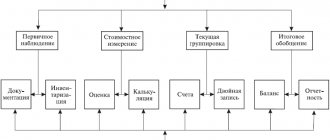Introductory information about the simplified tax system
Under the simplified tax system, the taxpayer has the right to choose for himself the object of taxation from two options (clauses 1, 2, article 346.14 of the Tax Code of the Russian Federation):
- income;
- income reduced by expenses.
Each of these taxation objects has both advantages and disadvantages, which it is advisable for organizations and entrepreneurs to take into account when planning work on the simplified tax system. The table below shows a comparative analysis for each object of taxation under the simplified tax system
| How is the simplified tax system different? | |
| "income" | "income minus expenses" |
| Tax rate | |
| The general rate is 6% (clause 1 of Article 346.20 of the Tax Code of the Russian Federation) | The general rate is 15% (clause 2 of article 346.20 of the Tax Code of the Russian Federation) |
| The tax base | |
| Amount of income | The amount of income reduced by the amount of expenses |
Next, we’ll tell you how, with a simplified tax system of 6%, you can reduce the “simplified” tax on expenses incurred.
Accounting statements of an organization on the simplified tax system in 2021: document forms
The LLC accountant's calendar on the simplified tax system for 2021 includes only annual reporting. This is not required from the individual entrepreneur either. Interim reports (monthly, quarterly) are relevant only if they are specified in the accounting policy.
The deadline for submitting annual reports is March 31. Composition - only the balance sheet and financial statements with attachments. In case of significant deviations from industry averages or losses over several years, tax authorities have the right to demand explanations for the balance sheet. The form is paper or electronic, not unified. The recommended format for submitting financial statements in electronic form is approved by Order of the Federal Tax Service of Russia dated March 20, 2017 No. ММВ-7-6/ [email protected] Place of submission - Federal Tax Service and Rosstat.
This is what the form of simplified annual financial statements looks like, which small businesses submit to the simplified tax system.
In recent years, the number of reports to other departments has increased significantly: SZV-M reports must be submitted monthly to the Pension Fund of the Russian Federation, and personal income tax declarations must be submitted quarterly. In this regard, although small businesses are allowed to conduct accounting in a simplified form, the total volume of accounting work has not become smaller, and the cost of outsourcing accounting services in an LLC using the simplified tax system does not decrease.
No cost control
Under the simplified tax system with the object of taxation “income,” the “simplified” tax should be calculated and paid on the entire amount of income received (clause 1 of article 346.18 of the Tax Code of the Russian Federation). In this case, the expenses incurred are not taken into account when calculating the tax base, and you are not required to document them. Therefore, the tax office does not check expenses under the simplified tax system with the object “income” at a rate of 6% (Letters of the Ministry of Finance of Russia dated June 16, 2010 No. 03-11-11/169, dated October 20, 2009 No. 03-11-09/353). This approach applies to both organizations and individual entrepreneurs. They are required to pay expenses. Neither your own expenses nor the expenses of suppliers are taken into account when calculating the simplified tax system at a rate of 6 percent. This, in essence, is the difference with the simplified tax system “income minus expenses”, when incurred expenses reduce the amount of tax.
Simplified accounting forms and forms, relevant in 2020
Bookkeeping on the simplified tax system from scratch usually begins with the questions: what accounting documents should an LLC have under the simplified tax system, what forms and forms of documents to use. Federal Law No. 402-FZ has granted broad powers to economic entities in this area, which the Ministry of Finance regularly confirms. For example, instead of a consignment note, it is convenient to use a universal transfer document (Letter of the Federal Tax Service of Russia dated October 21, 2013 No. ММВ-20-3 / [email protected] ). This is what the UPD form, a universal transfer document, looks like:
Basic rules for primary and accounting and tax accounting registers:
- Only events that took place are recorded; the law specifically stipulates liability for records of imaginary transactions.
- All forms are approved in the accounting policy of the organization.
- The documents for which the Federal Tax Service has developed an electronic format have an established structure, but differences in appearance are allowed and have an expanded set of indicators.
- Some primary documents are unified (cash, bank). In addition, accounting, for example, in a travel agency or concert box office in a simplified manner, encounters ticket forms, in laboratories or research centers - with centralized forms of reports and protocols, etc. There are no unified registers.
What expenses reduce tax?
According to the rules of the Tax Code of the Russian Federation, an organization or individual entrepreneur using the simplified tax system can still reduce the simplified tax for some expenses. In the formula for calculating tax on income simplification, expenses that reduce the amount of the simplified tax system of 6% are distributed according to the following formula:
Tax = Income x 6% – Expenses
Organizations and individual entrepreneurs can reduce the “simplified” tax at a rate of 6% for the following expenses (clause 3.1 of Article 346.21 of the Tax Code of the Russian Federation):
- insurance premiums and “injury” contributions paid from employee benefits;
- temporary disability benefits paid at the expense of the employer (except for industrial accidents and occupational diseases);
- contributions for voluntary insurance of employees in case of their temporary disability (under certain conditions).
However, keep in mind that expenses will not be able to reduce the simplified tax by more than 50%.
The expenses of an individual entrepreneur under the simplified tax system of 6%, if he has no employees, can include the insurance contributions he paid in a fixed amount for compulsory pension and medical insurance “for himself.”
Expenses using the cash method in accounting under the simplified tax system “income minus expenses”
How are some types of expenses reflected in accounting using the cash method and for the purposes of calculating simplified tax?
The main difference: in accounting, all expenses that are properly incurred, accepted and paid are accepted, and for the purpose of calculating tax under the simplified tax system - only those indicated in a closed list. In addition, under the simplified tax system, “income” expenses are not taken into account at all.
Read about what expenses can be classified as expenses for the simplified tax system in our article.
As for advances issued for future deliveries of goods, provision of services, performance of work, they do not relate to expenses in accounting under clause 3 of PBU 10/99. The situation is similar in tax accounting: an advance cannot be recognized as an expense before the goods or services are accepted.
Let's compare accounting and tax accounting when reflecting expenses for some items:
- product;
- inventories;
- fixed assets;
- wage.
Don't forget about the expense book
All “simplified” people are required to keep a book of income and expenses (Article 346.24 of the Tax Code of the Russian Federation). It is also called KUDiR. The booklet was approved by Order of the Ministry of Finance of the Russian Federation dated October 22, 2012 No. 135n. In this case, for example, at the simplified tax system of 6 percent, accounting for suppliers’ expenses in the Book may not be carried out, since they do not reduce the tax base.
With the simplified tax system at a rate of 6%, “income” expenses can be recorded in KUDiR - at the request of an LLC or individual entrepreneur. They, anyway, do not affect the calculation of tax.
Read also
17.04.2017
Accounting policies and chart of accounts
The accounting policy for the simplified tax system is an important and detailed document that any company is obliged to develop. It must be approved by a separate order. It reflects the chosen accounting option and its other features.
The text of the order must contain, along with organizational and technical nuances, data on the selected form of accounting registers and primary accounting documents, working accounting accounts. It also needs to display accounting forms and methods for storing “primary” documents. In addition, it is necessary to indicate the rules of document flow, as well as which PBUs will be used and which will not. The organization must separate low-value assets from fixed assets, and also stipulate the possibility of creating reserves or refusing to do so, etc.
It is necessary to have appendices to the order that would reflect the forms of simplified accounting registers. Here Appendix No. 5 to the order of the Ministry of Finance dated July 2, 2010 No. 66n “On the forms of financial statements of organizations” comes to the rescue.
If we talk about the consolidation of accounts, it is based on reducing the chart of accounts by reducing their number through consolidation. As for the direct decision on how exactly to combine accounts, it is made within the framework of accounting policies. The text of the order must necessarily be accompanied by a chart of accounts with which the company will work.
Due to the fact that representatives of small businesses can create accounting records in a truncated version and with enlarged data, this also needs to be reflected in the accounting policy.
The issues of storing primary accounting documents also deserve special attention. They may be needed by companies and individual entrepreneurs that work on a simplified basis, for example, when switching to another taxation system.
It is very important that accounting under the simplified tax system in 2021 be organized in such a way that when returning to the simplified tax system or switching to “income minus expenses,” analytics on accounting data can be restored with minimal labor costs, as required by the corresponding regime (tax object) .
Accounting for individual entrepreneurs using the simplified tax system
As for merchants, they are not required to keep accounting records in accordance with subparagraph. 1 part 2 of the Law on Accounting dated December 6, 2011 No. 402-FZ. As required, they only keep tax records. It serves as the basis for filling out a declaration under the simplified tax system.
If an individual entrepreneur wants to keep accounting records, it can be organized using one of the indicated options. It is also possible to develop your own method at your own discretion. However, most often this solution only brings additional difficulties that can be avoided if you choose a simpler method.
Read also
01.02.2018
Do you need to do accounting?
According to the articles of Federal Law 402, in force since 2011, accounting is the responsibility of companies, regardless of the tax system they choose. It follows from this that business structures must:
- formulate accounting policies certified by the General Director;
- reflect economic events in accounting accounts;
- compile and submit financial statements in a timely manner to “your” branch of the Federal Tax Service and the territorial body of Rosstat.
According to the general rules, accounting under the simplified tax system implies:
- reflection of transactions performed using the double entry method;
- their confirmation by the “primary”;
- generation of reporting in full (forms 1 and 2, statements of cash and capital flows, explanatory note).
According to the norms of 402-FZ, companies receive the right to conduct simplified accounting under the simplified tax system if any of three statements are met with respect to them:
- the company meets the criteria for a small enterprise;
- the legal entity is a non-profit company;
- the economic entity is involved in the Skolkovo project (its special status is documented).
The simplified procedure for preparing financial statements assumes that the compiler reflects the indicators for the past year using aggregated indicators without breaking them down into subgroups. The appendices to the submitted documents reflect only the information that seems significant in the opinion of the taxpayer himself.
Accounting Principles





